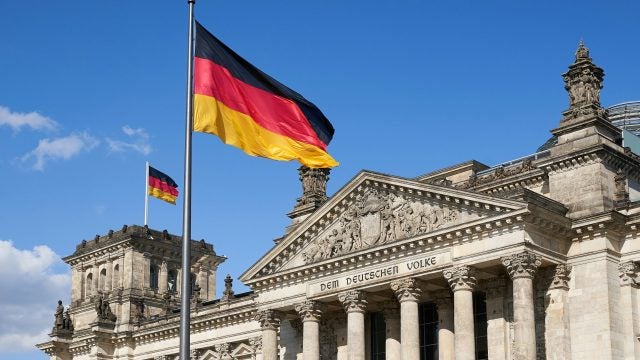Title: The End of Petrodollar Recycling and the Future of Islamic Finance
Islamic Finance has mainly replicated conventional finance methods inefficiently. It has thrived during periods of high oil prices, which allowed recycled petrodollars to implicitly subsidize its inefficient modes. As petrodollar flows end, the industry cannot afford the costs of its characteristic inefficiency. Reorienting the industry toward managing financial flows for Muslim charities and remittances can serve simultaneously the purposes of financial development, poverty alleviation, and combating criminal finance.
What Islamic Finance Does Not, But Should
Muslims account for a disproportionate share of the world’s poor. Not only are Muslim majority countries likely to have disproportionately high percentages of their citizens living below the poverty line, but Muslims also account for a disproportionate share of the poor in the United Kingdom and the United States. Almost half of British Muslims and a third of American Muslims are poor. Consequently, Muslims and non-Muslims alike are surprised to find that the industry called “Islamic finance” has very little to do with poverty alleviation and economic development. This applies to Muslims, who thought that the industry surely would focus on addressing poverty and underdevelopment, especially since the Islamic Development Bank has been a leader in research on this industry. It also applied to US Treasury officials, who had originally thought that workers’ remittances and charities would fall under the banner of Islamic finance, thus paying intense attention after the terrorist attacks of September 11, 2001. However, senior Treasury officials soon discovered that Islamic finance is merely a technical industry that uses structured finance methods to substitute for or replicate conventional financial products.
Thus, professional commentators on efforts to fight money laundering and terrorist finance in Islamic finance have been quick to note that the informal hawala transfer system is not in any way associated with Islamic finance. Indeed, from a technical juristic viewpoint, this system falls under the juristic heading suftaj, the practice of initiating a debt at one location for collection at another, which classical jurists forbade. Regarding core financial practices that the industry claims to be part of Islamic finance, I have argued in my testimony before the US Senate, and colleagues at the International Monetary Fund have likewise argued that there is no reason to believe that Islamic finance is particularly vulnerable or invulnerable to abuse by criminal financiers. While the opacity of its methods, including extensive use of offshore shell companies, means that we need sophisticated regulators to monitor this industry, the much larger industry that created such vehicles, mainly for tax purposes, is conventional. The small sample of Suspicious Activity Reports recently published under the ominous name FinCEN Files has demonstrated that Islamic and conventional banks are equally likely to be implicated in suspicious and possibly criminal activity. In this regard, informal hawala systems are not likely to file Suspicious Activity Reports, because reliance on trust networks is their primary strength, which keeps financial transfer fees low, and hence allows them to serve a legitimate purpose that formal money transfer networks have failed to fulfill. My proposal below aims simultaneously to address Muslim problems of financial underdevelopment and poverty, as well as proper regulation of charities and informal money transfer systems to minimize the chances of abuse by criminal financiers.
State-Sponsored Capitalist Islamism
Upon close inspection, Muslims and non-Muslims learn quickly that Islamic finance is primarily concerned with what I have called “Shari`a arbitrage,” the legal art of using variations on premodern contracts, e.g. sales and leases, to synthesize modern financial transactions. Premodern Islamic jurisprudence, like other religious laws, had instituted forms of proto-financial regulation generally in the form of permitting certain contracts and forbidding others, with hardly any guidance on pricing. Primary among these laws is the prohibition of usury, known in Hebrew as ribit and in Arabic as riba, and interpreted strictly to include all forms of interest at various times—historically by the Catholic Church and still today by some Orthodox Jewish and Muslim clerics. Such prohibitions were always possible to circumvent through ancient versions of today’s structured finance stratagems, but the transaction costs of implementing such ruses were sufficiently high to restrict their use to cases of genuine need—which overrides prohibition. Modern technologies of structured finance have made these transaction costs manageable, thus rendering the uncritical “Islamic finance” application of premodern jurisprudence logically incoherent.
Nonetheless, the two waves of petrodollar recycling, the first in the late 1970s to mid–1980s and the second from the 2000s through 2010s, have fueled this “Islamic finance,” which has participated in recycling the resulting pools of liquidity, small portions of which shunned the traditional channels of bank deposits and sovereign bonds. Thus, while Islam had been around for 1,400 years before the term “Islamic banking” appeared in the 1970s, the rise of Muslim identity politics in the mid-twentieth century combined with petrodollar flows to give birth to this industry. Despite its manifest inefficiency—due to spurious trades, shell companies, and fees to law firms and specialized Muslim jurists—the industry may have served multiple positive purposes. It allowed more Muslims to engage with the formal financial system both as clients and professionals, governments to keep a closer eye on the finances of Islamist groups, and also allowed corporate borrowers, both domestic and foreign, access to credit at lower interest rates. Conversely, the transaction costs associated with “Islamic finance” methods make retail products more expensive to customers in relatively captive corners of the market, for example for mortgages. Thus, Muslim savers who use this industry receive lower yields on their savings and Muslim borrowers who use it pay higher (disguised) interest on their debt.
The historical reasons for the emergence of this peculiar industry are complicated. I tried to explain the phenomenon as state-sponsored Capitalist Islamism, which some Arab governments encouraged both to tame and/or coopt nationalist and socialist forms of Islamism, and in the process to monitor the finances of Islamist business networks. The massive infusions of petrodollars in the late 1970s and again in the 2000s fueled financial bubbles in oil-exporting countries and globally. The implicit subsidies to Islamic finance, which cover the costs of its inefficiency, represented a tiny fraction of the volume of recycled petrodollars. As the age of petrodollars nears its end, Muslim countries are likely to suffer exacerbated by their consumerism and continued financial underdevelopment. Institutions that use the current inefficient forms of Islamic finance will no longer find an eager market for the identity-political “Islamic” label, absent the excess petrodollar liquidity that subsidized low-interest rates on bonds marketed as sukuk or high-interest rates on loans marketed as murabaha, etc. However, as we learned from Max Weber around the turn of the previous century, bureaucracies and institutions survive through “goal displacement,” in this case replacing the goals of recycling petrodollars and supporting Capitalist Islamism. I argue next that this displacement presents an opportunity for Islamic finance to serve better goals in economic development and financial law enforcement.
Proposal: Redirecting Charities and Remittances through Properly Regulated Credit Unions
Petrodollar recycling has been beneficial not only to oil-exporting countries but also to countries that export labor to and attract investments from oil exporters. A very small fraction of these petrodollars were recycled, for example through the Islamic Development Bank, to fund microfinance, infrastructure, and other developmental goals. Nonetheless, a lack of access to capital remains the primary reason for economic underdevelopment. Recently, we have witnessed poverty rates rising sharply during the COVID-19 pandemic, which is, unfortunately, a harbinger of pain to come as the loss of petrodollars recycled through workers’ remittances, loans, and direct investment becomes permanent.
Over a decade ago, my colleagues and I conducted proof of concept experiments that illustrated the possibility of leveraging and improving indigenous (and jurist-sanctioned) rotating savings and credit associations to build modern credit unions that solve scalability problems caused by default risk. Unfortunately, security concerns following the uprisings in 2011 prevented us from completing the follow-up field experiments to establish proto-credit unions in a very poor Egyptian governorate. The ultimate vision was to create networks of credit unions that would be vehicles of formal financial intermediation for the poor. Those institutions would simultaneously solve the scalability problems of current informal credit networks and serve as conduits for access to formal financial sectors dominated by large banks. The same institutions can also be used for disbursement of Muslim charity, which ideally includes interest-free lending, forgiveness of stressed debtors, and subsidizing the fees of remittance transfers. In the process, they can help to achieve the heretofore unattainable goal of formalizing informal networks that currently handle the bulk of remittance fund transfers. Thus, the proposed networks of credit unions can simultaneously serve financial development and law enforcement goals in Muslim societies.
. . .
Mahmoud El-Gamal is Professor of Economics and Statistics at Rice University, where he holds the endowed Chair in Islamic Economics, Finance and Management. His publications include Islamic Finance: Law, Economics and Practice (2006) and Oil, Dollars, Debt and Crises (with Amy Myers Jaffe, 2010).
Recommended Articles

This article contends that South Africa’s 2025 G20 presidency presents a critical opening to shape governance of critical mineral supply chains, essential for renewable energy, digital economies, and national…

Germany’s economy is being throttled by a more competitive China that has usurped its previous manufacturing dominance in many industries. In response, Germany has doubled down on the China bet…

In 2021, the European Union (EU) attempted to assert itself in the Indo-Pacific arena to increase its geopolitical relevance by releasing an ambitious and multifaceted Indo-Pacific Strategy. However, findings from…